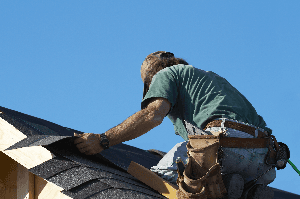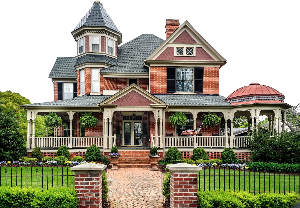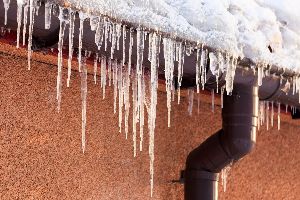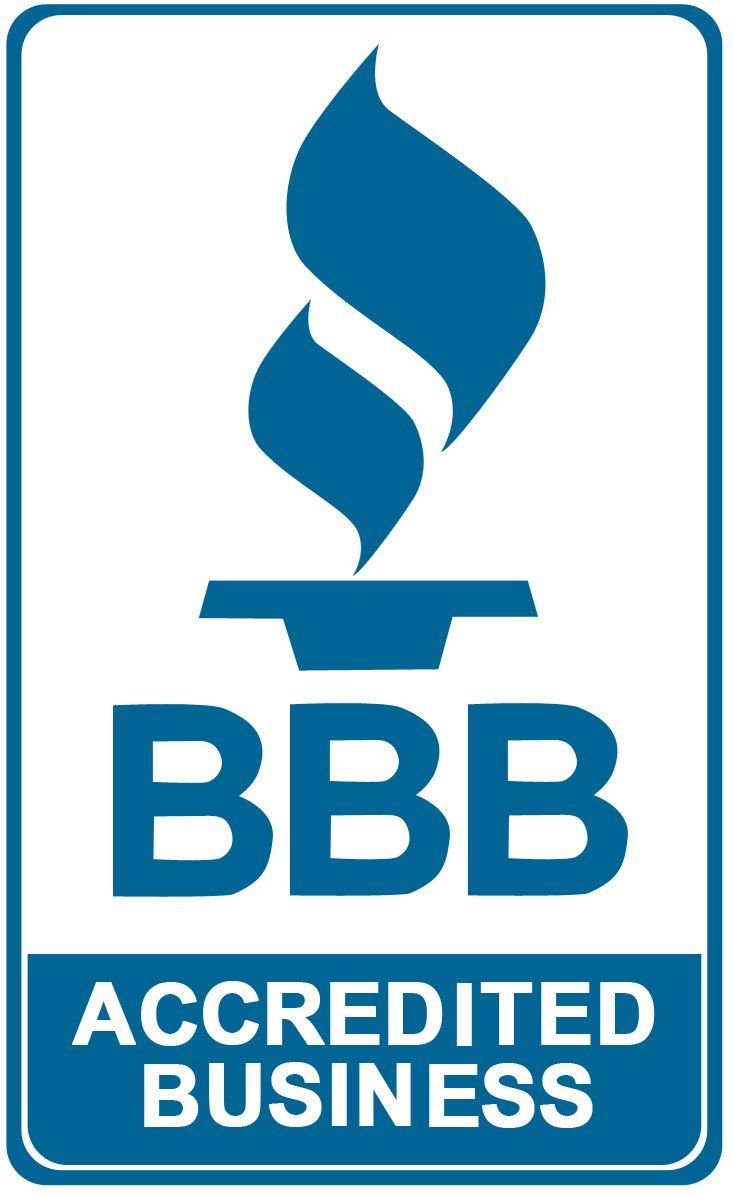Overlay or Not To Overlay: Reasons You Need a New Roof Instead
- By websitebuilder
- •
- 11 Jan, 2017
- •

If your roofing shingles deteriorate from old age and appear curled, faded, or broken, contractors may suggest that you replace your roof completely to keep the rest of your home safe. But if you choose to add an overlay, or cover up, your existing roofing shingles to save time and money, it may be the wrong decision to make, especially if there's damage in the sheathing. Damage in this area of the rooftop can potentially cause issues in the rest of your home, including wood rot and roof edge damage.
Before you make a final decision to overlay your roof, keep the following information in mind.
Wood Rot
O'Fallon can receive up to 42 inches of rain throughout the year and 14 inches of snowfall during the cold season. These weather changes can potentially cause additional problems for your deteriorated roof, including moisture-related wood rot. Wood rot is one problem you can't spot easily, especially if it affects the sheathing material that forms your home's roof deck, or top.
Sheathing includes the planks and plywood that builders and roofers place over the trusses of your home's attic during construction. The material acts as the foundation for your roof's shingles and underlayment. If rainwater, snow, or melting ice penetrate your damaged shingles and underlayment, the water can soak into the sheathing. Unless the moisture dries up quickly, it can rot the wood.
Sheathing can also deteriorate or weaken over time. If you choose to overlay the roof and only cover up the damaged parts of your sheathing, that covering may still cause you issues in the end. The weight of the new boards and shingles may create additional stress on your home's trusses and rafters. Combined with the moisture and rot, your home's foundation could potentially collapse during times of heavy snow.
In addition, moisture problems and rot can affect your home's gutters and flashing.
Roof Edge Damage
Moisture can travel to the structures located around the edges of your roof, including the gutters and flashing. Although it's possible to locate exterior damage in these structures just by looking at them, identification can also be difficult because some of the worst damage can hide behind or beneath the structures and cause significant problems for your home.
Damaged gutters can pull away from the roof edge and attract birds, rodents, and other animals that seek shelter from the weather and predators. The structures may also have problems draining water away from the soil around your home. As a result, the water to run off the saturated soil and penetrate your basement or crawlspace. Unless you check or use your basement regularly, you might not notice the damage, such as mold growth in your home, until it's substantial.
Your home's flashing are strips or sheets of metal designed to prevent leaks in different areas, such as your chimney and attic, around and on your roof. Although flashing can break down, loosen up, or rust on its own, water from your damaged roof can also cause these issues if leaks get behind the flashing. The leaking water can spread into the walls and ceiling of your attic or seep into your home's siding. Moisture and water found in these places can lead to mold growth and rot as well.
You can avoid wood rot and roof edge damage by having a roofing contractor like Eagles Exteriors inspect and replace your deteriorated roof. The company stays open 24 hours a day, every day of the week, even on Sundays. If you have concerns or questions about roofing services or would like to learn more about replacing your roof, contact Eagles Exteriors today.

When you venture into your attic, the air and the insulation should feel dry. If your insulation feels moist, or if you're noticing little pools of dampness, your first thought may be that your roof is leaking. But what if you can't find any damaged or missing shingles? Follow these steps to discover why your attic is becoming moist.
Look for Less Obvious Sources of Leaks
Many homeowners assume that all leaks are caused by holes in the roof or missing shingles, but in fact, this is only one possible way water can enter your attic through the roof. Wait for a day when the weather is decent and then climb up on a ladder to check for these other sources of leaks.
Missing or Damaged Flashing
Flashing is the metal barrier that surrounds chimneys, vents, and other items that project from your roof. Flashing can sometimes become damaged by ice buildup, fallen branches, or naturally forming rust. If your flashing is peeling away from the roof or looks like it's coming "undone," this is probably where the water's coming in. Have a roofing company come repair or replace your flashing.
Exposed Nail Heads
When your roof is placed on your home, the nails in one layer of shingles should be hidden under the next layer of shingles. If your shingles are not applied properly and a nail head is left exposed, little drops of water can seep in around it. If you're comfortable climbing on your roof, you can pound down the nail and cover the head with roofing cement to stop the leak.
Blocked Gutters
If your gutters are blocked by debris, water may pool on certain spots on the roof for so long that it starts permeating the shingles. Luckily, there's an easy fix for this: clean out your gutters!
Examine Your Bathroom and Kitchen Vent Fans
Bathroom and kitchen exhaust fans should be vented to the outdoors, but if your home was built or remodeled by a less than scrupulous contractor, the vent may have been wrongly routed to the attic. Since these exhaust pipes emit humid air, moisture will accumulate in the attic whenever you turn them on.
Turn on your exhaust fan after a shower or after using your oven, and then venture into the attic. Do you see or feel air coming into the attic? If so, you'll need to have a contractor come re-route your exhaust fan and probably replace your moist insulation too.
Consider Your Roof's Ventilation System
Roofing vents are designed to allow warm air to escape from your attic so that it does not become overly moist. Some roofs are designed with soffit vents placed under the eaves, and others have ridge vents placed along the top of the roof. Large roofs often have both types of vents.
If you truly cannot find a distinct leak and your bathroom and kitchen vents are properly placed, then poor ventilation is likely to blame for the moisture buildup in your attic. Your roof vents may be blocked, or there may not be enough of them for the layout of your home. Have your roofing company come investigate; they can clear the vents or install new ones if needed.
Some homes are designed in a way that, no matter how many vents you install, air simply does not flow well though the attic. When this is the case, installing an attic fan, which brings fresh air into the attic, should solve the problem and keep your attic dry.
If your attic is damp even though your shingles appear to be fine, don't just shrug your shoulders and ignore the issue. Attic moisture will soon lead to mold, which is dangerous to your health. Consider the causes above, and schedule an appointment with your roofing company to get to the bottom of the issue.

On a modern house, replacing the roof is often simple. Many homeowners choose the ever-popular asphalt shingle-it's practical, less expensive, and reliable. When you're restoring a historical home, though, matching the style and materials of the original architecture can really provide the "wow" factor for your curb appeal.
Here's what you need to know about what roofing materials are available for restoration and how you can know you're choosing the best one for your home's style and for your budget.
Know Your Style
Modern roofs are mostly functional, especially those of development homes that share the same easy-tobuild design. Historical homes, however, even when sharing similar blueprints, have unique character, and the roof shares in the aesthetic design. Roofs from the past are the "crown" of the home, and lines and features of each roof style reveals the home's architectural period.
Common historic roof styles include:
Spanish. Spanish-style homes typically feature clay shingles. The roofs are almost flat and are characteristically reddish, and they complement the simple symmetry of Spanish design.
Victorian. Victorian roofs were typically finished with wooden or slate shingles. The roofs themselves have features like rounded domes, turrets, and dormers. The eaves often have decorative trim. Scalloped or stylized shingles are not uncommon.
French. French-style homes have steep roof lines that run parallel to the horizontal lines of the house. The contrast is always in the roof color, which is much darker than the warm, tan plaster exterior common to French-inspired homes. The most common shingle type is wood.
Dutch Colonial. Dutch Colonial roofs are distinctive. They look similar to a barn roof, but they have square dormers to allow for proper headroom on the interior. The lines of this roof are quite steep.
Federal. Federal roofs accompany clean exteriors with simple gables that are neither too steep nor too shallow. The roof perfectly matches the symmetry you can expect from Federal-style homes.
Medieval and Gothic. A steep, pointed gable over the central entrance is a common feature. These roofs often have several gables, but they mirror each other. No part of the exterior is irregular.
Craftsman. Craftsman homes feature clean lines and simple building styles. Most roofs have exposed rafters, wooden shingles, and a shallow pitch. A large dormer is often used to increase space on the top level.
When you know your home's style, you can begin to appreciate how the roof is meant to be just as important as any other visual feature of your home's original charm.
Know Your Materials
Wood is often the default shingle of choice for historic homes, but in some areas and for some budgets, wood simply is not practical. If you're restoring a Craftsman or Dutch Colonial house, the best choice is wood. But there are some other shingle materials to consider for different styles.
Slate. While the initial investment is high, there is no better choice for Victorian or Gothic homes that feature steep gables. These roofs are made to be admired. The colors of natural stone can vary in the roof, providing visual interest. Slate lasts decades with proper maintenance.
Metal. Some Federal- and Colonial-style homes will look perfectly restored with a simple metal roof. For fancier homes, copper is the best choice. For homes that have a more rustic, farmhouse feel, choose tin or steel. These can be painted to give an aged patina look, with traditional crimped edges to give the "lined" look of historic roofs.
Asphalt. Yes, asphalt shingles could still work for your home. But instead of the typical shingle, ask your roofing company about custom or specialty shingle shapes. For example, the scallops that were common on Victorian homes can be mimicked with asphalt.
Rubber. Rubber roofing is a fairly new product, but it can be made to look like slate or even smooth wood shakes. Since rubber roofing is made from recycled tires, it is a cost-effective alternative to real slate or wood.
Clay or cement tiles. These can be made to look like slate and will match the architectural style and color of nearly any old house.
For more information on choosing a period-authentic roof for your historic home, contact us at Eagle Exteriors.

Ice dams occur when the temperature dips below freezing and snow falls, so ice dams are a common problem in cold weather climates. As a homeowner, it's important to know what causes an ice dam and how you can prevent one from occurring on the edges of your roof.
Ice Dams Are Caused by Hot Spots
Ice dams occur as a result of hot spots on a roof. These hot spots are caused by hot air trapped in the attic. When hot spots form, they cause snow on the peaks of the roof to melt. Meanwhile, snow located over the cooler parts of the roof (typically around the eaves) will stay frozen.
When the melting snow reaches the colder parts of the roof, the water refreezes into ice. This thawing and freezing can cause ice to build up on the edge of the roof. As the ice builds, it can back up under the shingles and onto the sheathing. When the ice finally thaws, this can cause leakage and water damage.
Icicles Are a Symptom of Ice Dams
As ice backs up under the shingles of the roof, it can also drip into the gutters and over the edge of the gutters, creating icicles. Clogged gutters can be especially problematic in winter because they can contribute to an ice dam problem.
Other symptoms of an ice dam may include:
· Uneven melting of snow on the roof
· Water damage that occurs after a thaw but not after a heavy rain
· Water leaks in the walls of the home
· Ice that clings to the exterior walls of the house
· Water that seeps into the home through the doorways and windows
If you notice any of these problems on your property, this is a likely sign of an ice dam.
You Can Prevent an Ice Dam
Hot spots in the attic are typically caused by poor insulation. When warm air from the home escapes into the attic, that warm air then rises, warming the rooftop in the highest points over the house, allowing melted snow to run down to the edges of the roof to refreeze. Homeowners hoping to prevent ice dams from occurring can take the following steps to protect their property.
Add Insulation
Proper insulation can prevent warm air from rising into the attic. To properly insulate your attic, cover your ceiling joists with R-38 batts of unfaced fiberglass insulation. Lay the batts down directly on top of the joists and existing insulation, but keep the batts away from the roof sheathing. Wear a dust mask and gloves for this project.
Keep Cold Air Moving Through Your Attic
Open up any vents in your attic to allow the cold air to enter. If you don't have working vents in your attic, be sure to get some installed.
Clean Your Gutters
Your home's gutters are an important part of the drainage system that keeps your home free of leaks. If your gutters are clogged when the freezing temperatures hit in winter, this can cause ice to build up inside your gutters, contributing to your ice dam problem.
To prevent ice from forming, clean your gutters at the end of fall or beginning of winter. Get rid of any twigs and leaves that have built up inside the gutters and downspouts. This will allow the water that drips off of the roof to drain freely.
Get Your Roof Inspected
You can also have your home inspected by a professional roofer at the start of winter. Your roofer can let you know if your home is at risk for developing an ice dam.
If your home develops an ice dam this winter, get help as soon as possible. Delaying repairs can result in water damage, mold, and structural problems. At Eagle Exteriors in O'Fallon, we offer practical solutions to ice dam problems and make repairs when needed. Call us for an appointment at (636) 294-7322.

